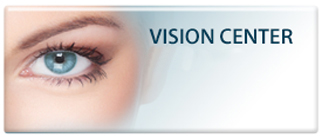Hyperopia or farsightedness in our patients affects your ability to see objects clearly that are close by. This condition occurs when the eye is shorter than normal or its cornea or lens isn’t curved as much as it should be. This makes images focus behind the retina instead of on it, blurring vision when objects are nearby.
Hyperopia affects 5–10% of people in the U.S. About 12 million Americans over 40 suffer from this common refractive error.

You’ll probably notice changes in your vision if you develop hyperopia; however, some of our patients, especially children, may not notice farsightedness. Other symptoms of this condition include:
- Headaches
- Eyestrain
- Squinting
Hyperopia can be minor or severe. It’s almost always easily treated by using corrective lenses. You may also opt to permanently fix your vision through refractive surgery procedures such as Conductive Keratoplasty (CK) and LASIK. Laser eye surgery for vision problems like hyperopia requires that you have acceptable eye health, active tear ducts, thick corneas and be over the age of 18.
If you opt to wear glasses or contacts, your prescription number reflects the degree of your hyperopia. Farsighted prescriptions are positive and begin with a plus sign (+). The higher the number, the more severe your hyperopia is. If you have mild farsightedness, you may only need to wear corrective lenses when looking at objects up close. Reading and using a computer are good examples of times that you’ll need your glasses if you’re diagnosed with hyperopia.
Hyperopia is a progressive condition that can continue worsening as your eyes develop. If you’re concerned you or your child is farsighted, it’s important to schedule an appointment at our Southaven optometry clinic right away. Untreated vision problems can result in a lack of focus, suffering performance at school or work and health conditions like headaches.


